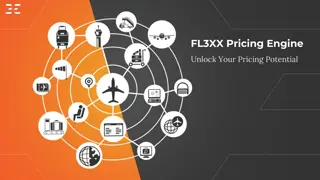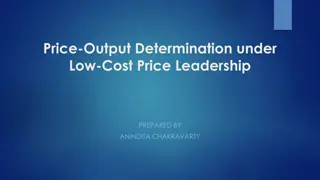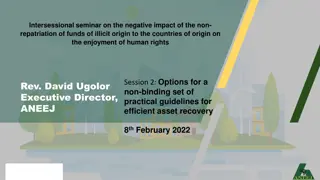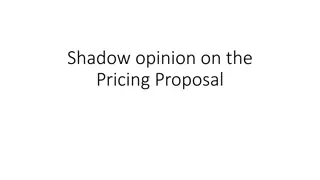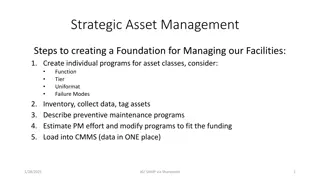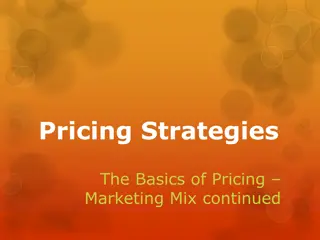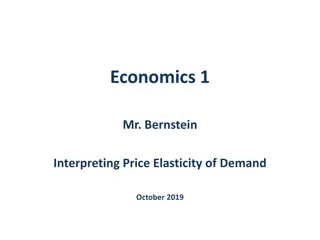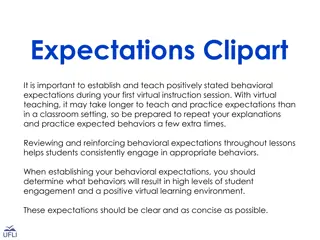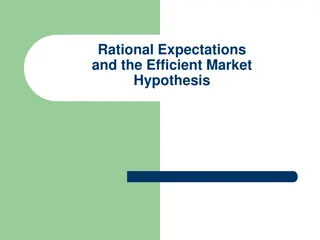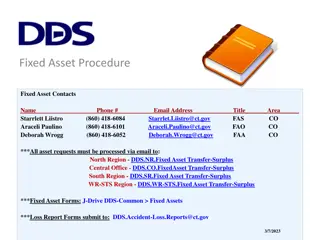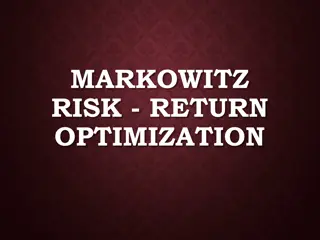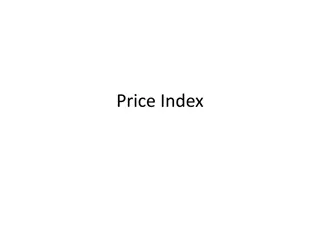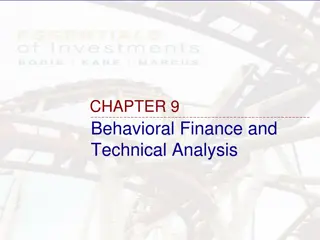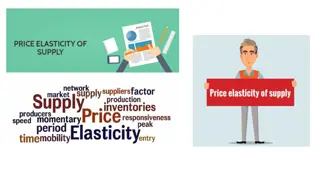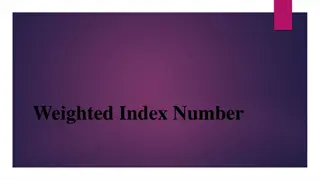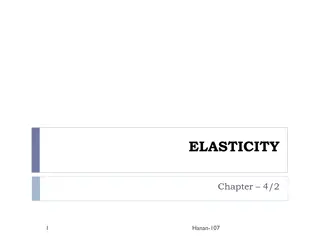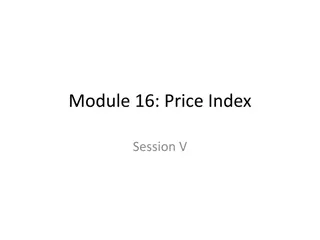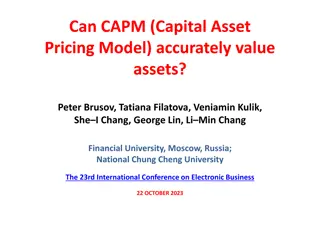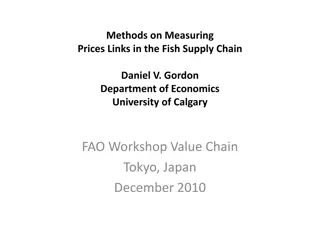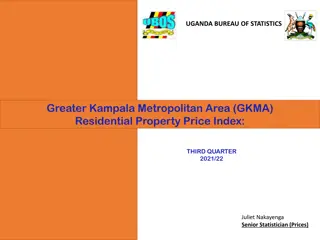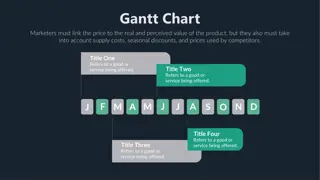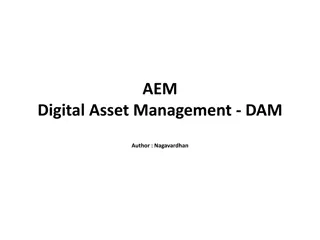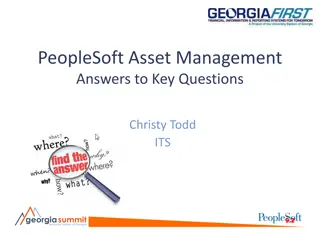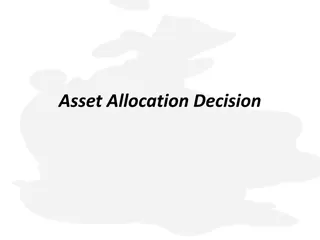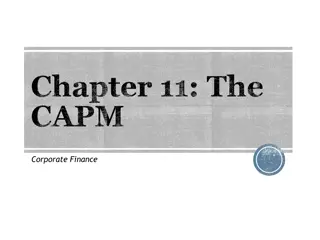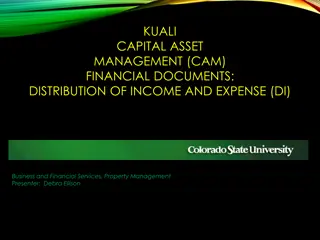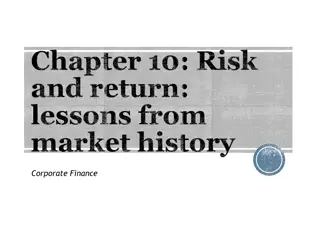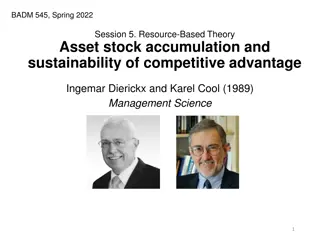Understanding Behavioral Asset Pricing: Factors Influencing Price and Return Expectations
Behavioral asset pricing models link investment asset returns with various factors such as risk, liquidity, and cognitive biases. This chapter delves into how features and characteristics influence the pricing of assets like cars and stocks, exploring the utilitarian, expressive, and emotional benefits associated with different products. Car manufacturers strategically enhance these aspects to appeal to buyers and may also exploit cognitive and emotional errors in consumer decision-making.
Download Presentation

Please find below an Image/Link to download the presentation.
The content on the website is provided AS IS for your information and personal use only. It may not be sold, licensed, or shared on other websites without obtaining consent from the author. Download presentation by click this link. If you encounter any issues during the download, it is possible that the publisher has removed the file from their server.
E N D
Presentation Transcript
Finance for Normal People Chapter 10: Behavioral Asset Pricing
Behavioral Asset Pricing Useful asset pricing models associate expected returns of investment assets with factors or characteristics Factors and characteristics include risk and liquidity Investment asset pricing models are like pricing models of meals, cars, movies and virtually every other product and service
Behavioral Asset Pricing The expected price of a meal is a function of: 1. Wants for utilitarian benefits such as high nutrition and great convenience 2. Wants for expressive and emotional benefits such as great prestige and pleasing esthetics 3. Cognitive and emotional errors such as inferring wine quality from its price
Behavioral asset pricing Question Think about a pricing model of cars, associating car prices with its features and characteristics What are some features and characteristics that account for the difference in price between a Toyota Corolla and a Rolls Royce Phantom, and between a Rolls Royce Phantom and a Lamborghini Veneno? Describe the utilitarian, expressive and emotional benefits of each feature and characteristic What do car manufacturers do to enhance the utilitarian, expressive, and emotional benefits of their cars? How do car manufacturers and car sellers exploit the cognitive and emotional errors of car buyers?
Behavioral Asset Pricing The expected return of a stock is a function of: 1. Wants for utilitarian benefits such as low risk and high liquidity 2. Wants for expressive and emotional benefits such as the virtue of socially responsible funds, the prestige in hedge funds, and the thrill of stock trading 3. Cognitive and emotional errors such as a belief that stocks of admired companies are likely to yield higher returns than stock of spurned companies, and that frequent trading is likely to yield higher returns than rarer trading
Behavioral Asset Pricing Arbitrage in meal markets Zagat directories Arbitrage in investment markets Closed-end funds
Behavioral asset pricing Question Risk-free arbitrage occurs when we buy an item at one price and simultaneously sell it or its perfect equivalent at a higher price The binomial and Black-Scholes option pricing models are based on risk- free arbitrage But the term arbitrage is used also when it is not risk-free. Closed-end fund arbitrage is one example What are examples of arbitrage and why might it fail to eliminate the effect of wants and errors on securities prices?
Behavioral Asset Pricing Theoretical asset pricing model Capital Asset Pricing Model (CAPM) Empirical asset pricing model 3-factor model
Behavioral Asset Pricing Standard Asset Pricing Rationales for factors or characteristics account only for wants for utilitarian benefits Behavioral Asset Pricing Rationales for factors or characteristics also account for wants for expressive and emotional benefits and the occurrence of cognitive and emotional errors
Behavioral Asset Pricing The Theoretical Capital Asset Pricing Model (CAPM) The expected return of an asset is a function of: 1. Risk related the Market factor
Behavioral Asset Pricing Figure 10-1: The capital Market Line Expected Returns Capital Market Line M (Market Portfolio) Risk Free Rate Standard Deviation of Returns
Behavioral Asset Pricing The theoretical CAPM ?? - ??= ??+ ??[?? - ??] Where: ?? is the realized return of Alphabet (Google) s stock ?? is the realized return of the market portfolio ?? is the excess return of Alphabet (Google) s stock (i.e. its alpha) ??is the beta of Alphabet (Google) s stock
Behavioral Asset Pricing The theoretical CAPM ?? ?? ??= ??? Where: ?? is Alphabet (Google) stock s Market- factor beta ??? is the correlation between the returns of Alphabet (Google) s stock and the returns of the market portfolio ?? is the standard deviation of the returns of Alphabet (Google) s stock ?? is the standard deviation of the returns of the market portfolio
Behavioral Asset Pricing The theoretical CAPM ?(??) = ??+ ??[? ?? ??] Where: ? ?? is the expected return of Alphabet (Google) s stock ?(??)is the expected return of the market portfolio ??is the risk-free rate ?? is Alphabet (Google) stock s Market-factor beta ? ?? ??is the expected market-factor return or market-risk premium or equity premium
Behavioral Asset Pricing The Empirical Three-Factor Asset Pricing Model The expected return of an asset is a function of: 1. Risk related the Market factor; 2. Risk related to the Small-Large factor; 3. Risk related the Value-Growth factor
Behavioral Asset Pricing CAPM and Three-Factor Model The expected return of the Barrier Fund by the CAPM: Risk-free rate + 0.84 [Expected Market-factor return] The expected monthly return of the Barrier Fund by the three-factor model: Risk-free rate + 0.82 [Expected Market-factor return] + 0.05 [Expected Small-Large-factor return] 0.05 [Expected Value-Growth-factor return]
Behavioral asset pricing Question Excel file factors-Students includes monthly factor returns of 5 factors, market, small-large, value-growth, profitability, and investment. Factor returns are returns minus Treasury-bill returns that proxy for the risk free returns. It also includes monthly returns minus Treasury-bill returns of four mutual funds: VISGX - Vanguard Small Capitalization Growth Index Fund VISVX - Vanguard Small Capitalization Value Index Fund VUVLX - Vanguard US Value VIGRX - Vanguard Growth Index Fund
Behavioral asset pricing 5 Factors Mkt-RF is the return on a portfolio of all US stocks minus the return on Treasury bills SMB (Small Minus Big) is the return on a small stock portfolio (small market capitalization) minus the return on big stock portfolio (large market capitalization HML (High Minus Low) is the return on a value portfolio (high ratio of book to market) minus the return on a growth portfolio (low ratio of book to market) RMW (Robust Minus Weak) is the return on a robust operating profitability portfolio minus the return on a weak operating profitability portfolio CMA (Conservative Minus Aggressive) is the return on a conservative investment portfolio minus the return on an aggressive investment portfolio
Behavioral asset pricing Examine the returns minus Treasury-bill returns of each mutual fund by the CAPM, 3-factor model, and 5-factor model What are the betas of each factor according to each model? How do you interpret the betas? Are the betas consistent with the names of the funds? How are the betas similar or different across the 3 models?
Behavioral asset pricing VISGX- RF VISVX- RF VUVLX- RF VIGRX- RF Mkt-RF SMB HML RMW CMA RF 200605 -3.57 -3.01 2.79 0.6 1.32 0.43 -6.39 -4.26 -3.48 -3.99 200606 -0.35 -0.38 1.49 1.05 -0.06 0.4 -1.20 0.69 -0.62 -0.76 200607 -0.78 -3.64 3.42 1.72 0.96 0.4 -5.70 -1.86 0.70 -2.42 200608 2.03 0.44 -1.78 -1.82 2.14 0.42 1.77 1.90 2.26 2.58 200609 1.84 -1.35 -0.5 1.63 0.53 0.41 0.48 0.47 2.20 2.43 200610 3.23 1.87 0.52 -0.95 0.23 0.41 5.25 4.41 2.20 3.03 200611 1.71 0.77 0.53 -0.16 -0.85 0.42 2.71 2.62 0.32 1.77
Behavioral asset pricing VISGX - Vanguard Small Capitalization Growth Index Fund VISGX-RF CAPM Coefficients t Stat P-value Intercept -0.07 -0.42 0.68 Mkt-RF 1.23 31.47 0.00
Behavioral asset pricing VISGX is a small growth fund Based on the CAPM (1-factor model) it has a market-factor beta of 1.23 So when the return of the stock market increases by 1 percentage point, the return of VISGX can be expected to increase by 1.23 percentage points
Behavioral asset pricing VISGX - Vanguard Small Capitalization Growth Index Fund 3-Factor Model Coefficients t Stat P-value Intercept -0.03 -0.37 0.71 Mkt-RF 1.09 50.37 0.00 SMB 0.78 18.87 0.00 HML -0.25 -6.46 0.00
Behavioral asset pricing VISGX is a small growth fund Based on the 3-factor model, it tilts toward small capitalization stocks and away from large capitalization stocks (Its Small-Large (SMB) beta is positive 0.78) It tilts away from value stocks and toward growth stocks (Its Value-Growth (HML) beta is negative -0.25)
Behavioral asset pricing VISGX - Vanguard Small Capitalization Growth Index Fund 5-Factor Model Coefficients t Stat P-value Intercept 0.09 1.02 0.31 Mkt-RF 1.05 48.64 0.00 SMB 0.74 18.83 0.00 HML -0.16 -3.79 0.00 RMW -0.20 -3.19 0.00 CMA -0.25 -3.52 0.00
Behavioral asset pricing VISGX is a small growth fund Based on the 5-factor model, it tilts away from stocks with robust profitability and stocks with conservative investment Its RMW coefficient is negative -0.20, and its CMA coefficient is negative -0.25
Behavioral Asset Pricing Empirical Evidence and Theoretical Rationales What is the rationale for the value-growth factor? What is the rationale for the profitability factor?
Behavioral Asset Pricing Fleeting and sustained factors in asset pricing models Does the association between a factor and future returns disappear with no evidence of arbitrage? Does the association disappear with evidence of arbitrage? Does the association not disappear even with evidence of arbitrage?
Behavioral Asset Pricing What is the rationale for the empirical associations between stock returns and Small-Large and Value-Growth factors? 1. Data Mining Hypothesis: The empirical associations are due to data mining
Behavioral Asset Pricing Expectations of stock returns = 3.47** - 0.54** (Book-to-market ratio) + 0.31** (Market capitalization) 0.05 (Market-factor beta) ** Statistically significant at the 0.01 level or better This is inconsistent with the data mining hypothesis
Behavioral Asset Pricing What is the rationale for the empirical associations between stock returns and Small-Large and Value-Growth factors? 2. Risk Hypothesis: The empirical associations are due to the role of the Small- Large and Value-Growth factors as indicators of risk
Behavioral Asset Pricing Expectations of stock returns = 3.47** - 0.54** (Book-to-market ratio) + 0.31** (Market capitalization) 0.05 (Market-factor beta) ** Statistically significant at the 0.01 level or better This is inconsistent with the risk hypothesis
Behavioral Asset Pricing What is the rationale for the empirical associations between stock returns and Small-Large and Value-Growth factors? 3. Cognitive Errors Hypothesis: The empirical associations are due to cognitive errors, such as representativeness, where investors extrapolate high past sales, earnings, and other measures into the future
Behavioral Asset Pricing Table 10-2: Questionnaire where surveyed investors had only the characteristics of companies Past Stock Return Price-to- Book Market Capitalization Company Bad Good Company 1 Company 2 Company 3 Company 4 Low Average Average High High Low High Low Average High Low High 1 2 1 2 1 2 1 2 3 3 3 3 4 4 4 4 5 5 5 5 6 7 6 7 6 7 6 7 8 9 10 8 9 10 8 9 10 8 9 10
Behavioral Asset Pricing Fortune ratings on long-term investment value = 5.93 + 0.06 (Characteristic score) Not statistically significant This is inconsistent with the cognitive errors hypothesis
Behavioral Asset Pricing What is the rationale for the empirical associations between stock returns and Small-Large and Value-Growth factors? 4. Emotional Errors Hypothesis: The empirical associations are due to emotional errors, such as misleading affect
Behavioral Asset Pricing Expected-return score = 8.4 0.4** (Risk score) ** Statistically significant at the 0.01 level or better This is consistent with the emotional errors hypothesis.
Behavioral Asset Pricing Table 10-3: Questionnaire where surveyed investors had only the names of companies and their industries Never heard of the company Company Industry Bad Good Apache Crude-Oil 1 2 3 4 5 6 7 8 9 10 Sara Lee Cardinal Health Procter &Gamble Food 1 2 3 4 5 6 7 8 9 10 Health Care 1 2 3 4 5 6 7 8 9 10 Household 1 2 3 4 5 6 7 8 9 10
Behavioral Asset Pricing Fortune ratings on long-term investment value = 2.13 + 0.6** (Affect score) ** Statistically significant at the 0.01 level or better This is consistent with the emotional errors hypothesis
Behavioral Asset Pricing What is the rationale for the empirical associations between stock returns and Small-Large and Value-Growth factors? 5. Wants for Expressive and Emotional Benefits Hypothesis: The empirical associations are due to wants for the high expressive and emotional benefits delivered by stocks of large and growth companies
Behavioral Asset Pricing Standard and behavioral asset pricing rationales Empirical findings can consistent with more than one possible rationale Rationales for the momentum factor are one example
Behavioral asset pricing We illustrate behavioral asset pricing models by adding two social responsibility factors to the four-factor asset pricing model with Market, Small-Large, Value-Growth, and Momentum factors: The Top-Bottom factor Reflecting cognitive errors The Accepted-Shunned factor Reflecting wants
Behavioral asset pricing The Top-Bottom factor consists of the difference between the returns of stocks of companies ranked high and low on five social responsibility criteria: 1. Community (e.g., generous giving, support for housing) 2. Diversity (e.g., promotion of women and minorities) 3. Employee relations (e.g., strong union relations) 4. Environment (e.g., pollution prevention) 5. Products (e.g., product quality and safety)
Behavioral asset pricing The Accepted-Shunned factor consists of the difference between the returns of stocks of companies commonly accepted by socially responsible investors and the returns of company stocks commonly shunned by them Shunned stocks include stocks of companies in the alcohol, tobacco, gambling, firearms, military, and nuclear industries
Behavioral Asset Pricing Table 10-4: Comparison of the Barrier fund to the Vanguard 500 fund by a six factor model Barrier fund Vanguard 500 fund Alpha (annualized) 1.48% -0.68% Beta of Market factor 0.87 0.98 Beta of Small-Large Factor 0.15 -0.16 Beta of Value-Growth Factor -0.11 0.01 Beta of Momentum Factor 0.11 0.00 Beta of Top-Bottom Factor Beta of Accepted-Shunned Factor -0.05 0.03 -0.40 0.01
Behavioral Asset Pricing Factors and characteristics in asset pricing models Smart Beta and asset pricing models


